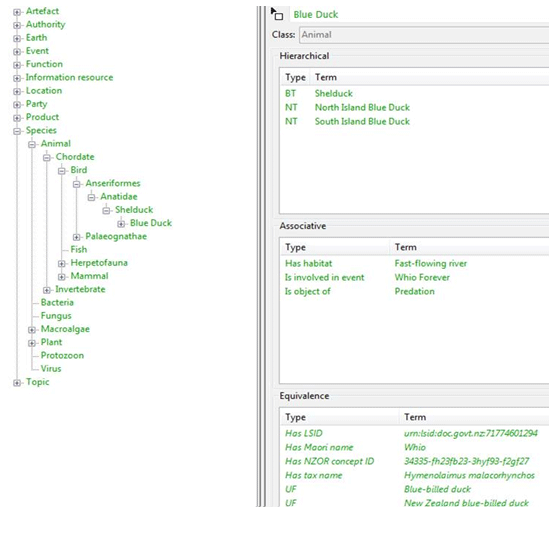OC first NZ Government Department to implement ContentWorX
New Zealand’s Department of Conservation (DOC) has become first Government Department to implement ContentWorX, a new Enterprise Content Management solution from TEAM Asparona.
“With a geographically spread and diverse staff, DOC required a flexible service which met its changing needs and offered increased search capability for content users,” said Craig Hampson, Director of TEAM Asparona Limited, which has deployed ContentWorX to the DOC’s 2000 staff.
ContentWorX, powered by Oracle, is one of three services available to public sector agencies as part of the New Zealand Government’s ICT common capability Enterprise Content Management-as-a-Service (ECMaaS) panel. The others are Intergen with a Microsoft-based offering known as Cohesion and OpenText with their content suite. The Department of Internal Affairs, as Government ICT Functional Lead, manages the service on behalf of all government agencies.
Following the award of this panel contract to TEAM Asparona in October 2013, DOC became the first agency to implement this service to meet its content management needs and deploy nationwide.
ContentWorX offers a flexible solution to meet agency requirements. It supports a folder-based approach, a search-driven or ontology based service (“folderless”) or a hybrid of both the folder and ontology.
“However, the true value of ContentWorX has been recognised by the enhanced ‘findability’ – the different ways to search for documents, and the ease with which users can save in to the system, all enabled by DOC’s adoption of the ‘ontology-based’ intelligent information architecture”, said Hampson.
“TEAM Asparona is pleased the content intelligence and enhanced search feature has been embraced by DOC and demonstrates the power of ContentWorX to deliver a secure and scalable service in the government-cloud.
“We look forward to expanding the ContentWorX content and records use case at DOC with secure mobility and increased opportunities for greater internal and external collaboration,” continued Hampson.
Allan Ross, DOC Director of Transformation and Threats, and Senior Responsible Owner for the project, said removal of the traditional folder structure was a deliberate decision by DOC and part of the organisation’s wider strategy to become a more open organisation.
“We recognised a cultural change was required for staff to adapt to the new content management system as it felt unfamiliar for staff to save documents into a repository with no requirement for manual classification or tagging (this is all done automatically in ContentWorX although you can add your own tags),” Ross said.
“We also wanted to ensure that DOC was aligned with the Government’s ‘open access’ policy and its desire to treat information as a ‘resource’ to be shared and to increase productivity and connectedness.”
Ross said a big focus for the project had been ensuring staff felt well-supported through this change and developed skills to use the new system effectively.
“The implementation of this system went right to the heart of some of DOC’s wider organisational changes as it was is the implementation of a service requiring leaders and their teams to put into practice the language of collaboration, sharing, access and mobility,” he said.
DOC and Team Asparona had worked closely throughout the project to manage these cultural concerns and respond to staff feedback as it arose, Ross said.
Moving from a folder-based system to one that is folder-less is a marked shift for users; from a navigable structure, to a more search-focussed environment. Giving users as many search tools and entry points to the organisation’s documents and content is key to ensuring efficient use, interaction, and collaboration.
While users can add their own tags to content, it was recognised that automating this step as much as possible would be valuable.
DOC runs various information systems internally as well as collaborating with a number of external organisations and boards. The heavy flows of information between these systems and external groups means the information needs to be categorised in a uniformed way. Doing so allows a range of people operating different systems to interact with and use it.
Search & Auto-Classification capability
To enable the consistent classification of information, DOC had a specialised vocabulary designed. By using this vocabulary, not only in the new Enterprise Content Management (ECM) system but across a number of internal systems, there is a consistent way of referencing (and therefore retrieving) DOC’s valuable information.
Optimation provided DOC with Smartlogic’s Semaphore – a tool that not only manages DOC’s specialised vocabulary and allows it to be used within various systems, it also auto-classifies content.
By integrating Semaphore with the new ECM, content is auto-tagged on upload with a range of keywords that are meaningful to users when searching. This complements the search-focused environment DOC has implemented.
The auto-classification can also be leveraged to assist with the information processes required of the public sector, by Archives NZ. In the past, disposal classes were allocated at a folder level however by using Semaphore, DOC are now able to automatically apply classes at an individual item level.
Semaphore has enabled DOC to provide its staff with enhanced search capability based on its own specialised vocabularies. This adds value to information at the point of creation and there is potential to use Semaphore with a range of other systems; increasing the consistency and interoperability across the business.
Semaphore has also improved the ability to appraise records by applying retention and disposal classes on an item by item basis. This is a huge step forward in the approach to records management in New Zealand’s public sector.
Key Results
- A managed ontology of 95,000 DOC terms developed in Semaphore Ontology Manager
- Auto-classification (tagging) across the 2.5 million items being migrated to the new system using Semaphore Classification Server
- Improved search and findability using organisation-specific vocabulary
- A managed ‘source of truth’ to enable consistent terminology across the business and various systems
- Automated retention and disposal class allocation at an item level.

Ontology example around the term “ Blue Duck”
